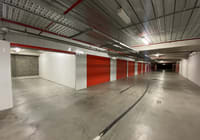
Glut looms in London office space as Barclays downsizes
Barclays’ decision to cut 25 per cent of its London office space highlights the growing risk that tenants will be in short supply for developers of buildings currently being constructed.
The lender is seeking to sublease offices in the Canary Wharf financial district to the British government, according to two people with knowledge of the matter. They asked not to be identified because the information is private. It shows how space that was previously occupied can suddenly come back on the market as companies downsize, providing more competition than investors expected.
Developers sought to capitalise on escalating rents by starting work on a record number of central-London office projects in the six months through March – making oversupply a bigger threat to rents and values than Brexit, UBS Group AG said in August.
Companies could shift as many as 100,000 jobs away from London within two years of Britain starting the process to leave the European Union, Jefferies Group LLC analyst Mike Prew wrote in a note to clients in June. That’s the equivalent to 20 skyscrapers the size of the Gherkin building, he said.
Upper Hand
“Tenants are getting the upper hand in rental negotiations, with banks optioning space to relocate from London,” Mr Prew wrote in a note to clients on Monday. “Property yields may give the illusion of looking screamingly cheap, but we have expected rising yields” since August 2015.
Barclays’ space cut, for which the bank took a £150 million ($239 million) charge in the third quarter, will probably be completed in the next two weeks, chief executive Jes Staley said. It’s the equivalent of about 5000 desks. The reduction in office space came after a hiring freeze was put in place, a spokesman for the bank said on Monday.
Office values in the City of London financial district fell the most in at least seven years in July after Britain voted to leave the EU. The referendum result is already forcing landlords to offer longer rent-free periods to attract occupiers and will cause rents in the City of London and docklands to fall 10 to 12 per cent over the next two years, according to broker Carter Jonas.
Increased Incentives
“There has been an increase in tenant space becoming available recently,” said Jules Hind, head of leasing and development at broker Farebrother Ltd. “If that trend continues it will have an impact on the wider market where landlords have already increased incentives to secure deals.”
Barclays isn’t the only bank cutting the amount of space it occupies in London. Citigroup has offered to rent about 28,000 square meters in its 25 Canada Square tower to Her Majesty’s Revenue & Customs, people familiar with the plan said in October.
HSBC Holdings plans to move 1000 workers to Birmingham, Britain’s second-biggest city, to cut costs and separate its UK operations.
“Barclays’s decision could become a more widespread phenomenon if the UK has a hard Brexit and doesn’t retain full rights to passport financial services to the European Union,” said Michael Pain, head of the central London unit that advises office tenants at Carter Jonas.
“If that is the case developers will find themselves competing more and more with” tenants looking to sublease space.
Jack Sidders and Sharon Smyth
Bloomberg










